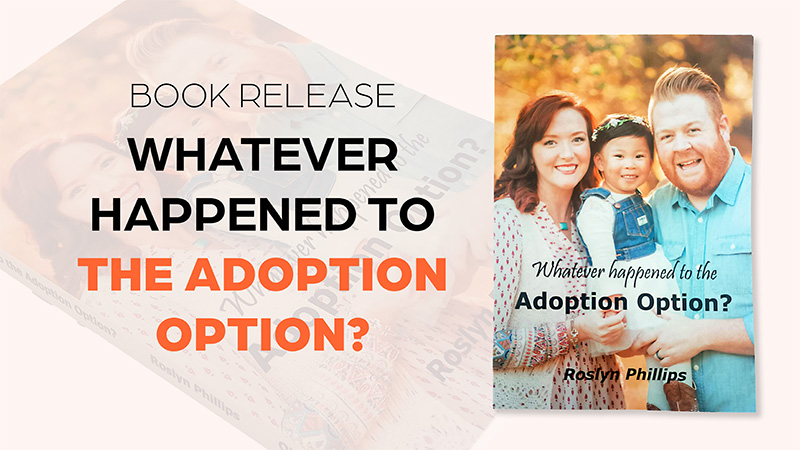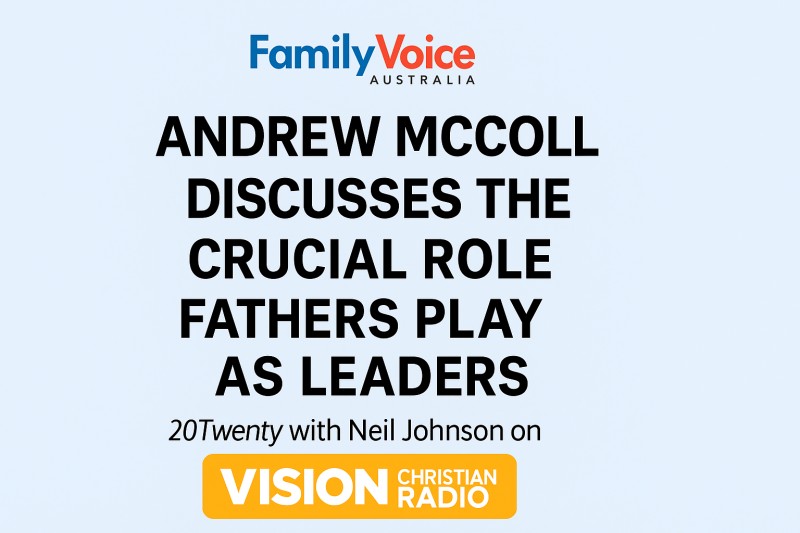- Welcome
- About
- Library
- Elections
- News
- Campaigns
- Standing Campaigns
- Reform Parliamentary Travel Entitlements
- Thank Tim Nicholls for Reinstating the Puberty Blocker Ban
- Stop Late-Term Abortion Bill: Protect Employers from Funding Abortions
- Thank NT Chief Minister Lia Finocchiaro for banning gender-confused men from women’s prisons
- Urgent — Help Stop the Surrogacy Bill 2025
- Tell Jacinta Allan: Stop Protecting Sex Offenders
- We stand with Jacinta Price
- Call on Lia Finocchiaro to Protect Christian Schools
- Thank Amanda Camm for Standing Up for Women
- Tony Burke’s Double Standard: Silencing Voices, Welcoming Extremists
- Thank Andrew Hastie for Defending Our Flag
- Tell the Albanese Govt: Stop Paying Women for Killing Their Babies
- Thank Senator Antic for Standing Up for Truth
- Tell the Melbourne Royal Show: Stop the Bible Ban
- Ask Health Minister Mark Butler: What are you doing to stop sex-selection abortion?
- Protect the Blood Supply – Keep the Ban on Gay Men Donating
- Tell the Liberals: Support Income Splitting for Families
- Tell The Nationals: Scrap Net Zero
- Tell Sussan Ley: Save Women’s Sport
- Thank Senator Henderson and the Coalition for Opposing University Indoctrination
- Tell Jim Chalmers: Stop the Reckless Spending
- Tell Jim Chalmers: Drop the Woke $5 Note and Keep the Monarchy
- Thank Qantas Chairman John Mullen for Rejecting Corporate Wokeness
- Thank the NT Government for Protecting Free Speech and Religious Freedom
- Tell Chris Minns: Defund the Offensive Mardi Gras
- Protect Our Schools from Political Activism
- Axe the Daniel Andrews Statue
- Thank the QLD Premier and QLD Health Minister
- Tell Premier David Crisafulli: Stand for Democracy in QLD – Restore the Right to Debate
- Emergency: Tell Key Senators to stop ‘Digital Prison’ Misinformation Bill
- Thank Peter Dutton for Commitment to Stand United Under One Flag
- Thank QLD Premier for Scrapping the “Truth-telling” Inquiry
- Where is the Honour and Respect for our King?
- Thank Toyota for Ditching Sponsorship of LGBT Parades and Events
- Protect Free Speech: Stop the Misinformation Bill
- Tell the AFL: Axe the ‘Welcome to Country’
- Tell Jim Chalmers: Don’t Ask Creepy Sex Questions on the Census
- Tell Jacinta Allan: Stop Radical Gender Indoctrination in Libraries
- Urgent Action On Babies Born Alive
- WA: Hit pause on dangerous gender self-ID bill
- A Fair Go for Families in Education
- Tell the Australian Olympic Committee: Ensure Respect for Christianity at the 2032 Brisbane Olympics
- Stop the Dangerous New “Human Rights Act”
- Stop Government-Mandated Radical Doctrines in Childcare
- Thank Bill Shorten for No More Prostitutes on the NDIS
- Repeal the Digital ID Bill to Protect Our Freedoms
- Tell the ADF: Stop the woke garbage and get serious about defending our nation
- Ask the Nationals to Support the Family with Income Splitting
- NSW: Stop the Inequity Bill
- Demand Answers from Labor MP Aaron Harper on the Babies Born Alive Bill Inquiry delay
- Defund the ABC over ‘racist country’ smear
- Tell the Premier and Opposition Leader: Keep Art Galleries Safe for Children
- Protect the rights of Biological Females
- Thank Cumberland City Council for Upholding Community Standards
- Tell Anthony Albanese the Bishop says Keep Free Speech
- Thank WA Liberals for ban on transgender drugs for kids
- Thank Anthony Albanese for his strong stand on Religious Freedom
- Thank Sarah Game for bill to prohibit gender ideology
- Thank the Opposition Leader and tell the Premier: Stop the Divisive Voice
- Tell the Premier & Education Minister: Kids should not be learning about bestiality at school
- Thank Archbishop Fisher for standing up for faith-based schools
- NSW: Tell NSW MPs: Oppose the flawed ‘Conversion Practices’ Bill
- Tell Peter Dutton: Protect Christian Schools
- Tell Mark Dreyfus To Keep Protections For Christian Schools
- Tell the PM & Opposition Leader: Protect Kids from Porn
- Tell Adelaide United: Free soccer star Musa Toure
- 27 WA Babies Cry Out From Their Graves
- Stop the Clandestine Censorship
- Keep the Monarchy on our $5 note
- Defund the ABC over Drag Queen activism
- VIC: Tell Victorian MPs: Keep the Lord’s Prayer!
- Hands Off Christian Schools
- Thank Peter Dutton for standing up for Australia Day
- Tell the PM: Stop the woke attack on Australia Day
- Thank the Coalition for their Policy to Keep Children Safe
- Tell the SA Premier: Hands off Anzac Day!
- Say No to Mutilating Healthy Body Parts
- Thank the ICC for banning gender confused men from women’s cricket
- Defend Religious Freedom In WA
- Thank Senator Antic for his bill to prohibit childhood gender transitions
- Federal babies bill must be voted on!
- Tell the Premier and Oppositiona Leader: Respect the Referendum - Repeal the SA Voice
- Thank Peter Dutton for calling for a proper Covid-19 inquiry
- Thank Peter Dutton for taking a stand against Hard Drugs
- Thank the AFL Commission for sticking to footy
- WA: Oppose the Deceiving WA Abortion Bill
- WA: Scrap The Shambolic Cultural Heritage Act
- Protect Children from Daycare Monsters
- Protect Unborn Children
- Tell MPs: Protect Freedom of Speech – Oppose the ACMA Disinformation Bill 2023
- Tell the PM: Protect Religious Freedom – Save Calvary Hospital
- Thank Monash council for cancelling drag queen story time
- Tell the Melbourne Comedy Festival: Reinstate Barry Humphries’ award
- Thank Dennis Hood, Sarah Game and Frank Pangillo for opposing woke language push
- Urge the PM to sack the Classification Board
- Support Henry Pike’s Bill to Save Australia Day
- Keep Moira Deeming MP in the Liberal Party
- Tell Adelaide City Council: Keep the Opening Prayer
- Thank the NRL for saying NO to gay ‘Pride Round’
- Tell Ch 10: Axe The Project over disgusting Jesus joke
- Tell the PM & AG: Protect the best interests of children
- Thank SA Libs for stand against the Voice to SA Parliament
- Thank Church Leaders for Protecting Christian School
- Protect Christian Schools
- Tell Albo: Keep your politics off the $5 note
- Thank Peter Dutton for No Blank Cheque on The Voice
- QLD: Do not attack parent rights and school choice
- Thank Senator Jacinta Price for opposing the divisive ‘Voice’
- Tell Mosman Council: Don't cancel Christmas!
- Thanks for Protecting Freedom of Speech
- Tell the SA Premier: Keep the Lord’s Prayer
- SA: Hands off the Lord’s Prayer
- NT: Stop attack on faith schools in the NT
- Keep using Mother and Father
- WA: Stop Zero Oversight To WA Emergency Powers
- Victoria – the Anti-Christian State
- WA: Defend Religious Freedom In WA
- Thank Anthony Albanese for keeping the Monarchy on our money
- Thank the Australian Catholic Bishops Conference for standing up to gender ideology
- QLD: Sophie's Law - Does the Queensland Government have a heart?
- Thank UAP Senator for standing up to radical identity ideology
- Stop abortion attack on religious hospitals
- Ask Albanese: When will you deliver $275 power bill cut?
- Stop the Killing in the Territories
- Keep opening the Senate with the Lord’s Prayer
- Coalition’s refreshing new voice of truth
- Tell the Manly Sea Eagles: Stick to footy - Ditch the LGBT propaganda
- Keep Christmas Day For Jesus
- Save Freo from “All Ages Drag Show”
- Tell MPs: We need a National Strategy to safeguard babies
- Say No to giving our Sovereignty away
- Say No to changing Birth Certificates in QLD
- Tell the woke NSW Premier: Keep the NSW flag – ditch the identity politics
- Introduce Miles Law to Protect Life in QLD
- QLD: Holding the QLD Premier to Account
- VIC: Andrews government divides children
- Adam Bandt disrespect for Australia, Australians and our Flag
- Keep Christian Chaplains in Schools
- Albanese to Ditch the Queen
- Keep Doors on School Toilets
- Tell the Breastfeeding Association: Do not cave to woke trans ideology
- Keep Blokes out of Women Sport
- Keep Australian Children Safe from Harms
- Mr Morrison - Can you help?
- Defund the UN over extreme abortion and gender ideology stance
- Tell Anthony Albanese: Protect Children from Trans Activists
- Protect Australians: Say no to hard drugs
- Stop Big Tech from Silencing Australians
- Tell MPs: Save Women’s Sport
- Time to Deliver on Religious Discrimination
- End Discrimination based on COVID19 Vaccination Status
- VIC: Act now to save Christian schools’ right to employ
- Tell MPs: Protect Free Speech
- Have your say in stopping kids’ access to online porn
- VIC: Act now to stop prostitution being decriminalised
- The ABC needs fixing
- WA: Free to Change: Stop McGowan’s therapy ban
- VIC: Act now to stop a second failed drug-injecting centre
- Act now to stop trans drugs for children
- Act now to stop Patten’s reckless changes to vilification laws
- Born Alive Bill
- Gambling Campaign
- Past Campaigns
- Events
- Contact
- 365Life
- Mother of the Year Awards
- Media Releases
- Little Music Church
News

The Statutes Amendment (Loss of Fetus) Bill 2022, introduced by Sarah Game, proposed to amend several laws in South Australia — including the Criminal Law Consolidation Act 1935, the Sentencing Act 2017 and the Victims of Crime Act 2001 — to formally recognise the loss of an in‑utero fetus as a distinct harm or death for the purposes of criminal justice and victims’ compensation.
Second Reading vote on Thursday, 27 November 2025
Voted for the Bill (Good vote)
Centofanti, Nicola
Game, Sarah (Teller)
Girolamo, Heidi
Henderson, Laura (Paired)
Hood, Ben
Hood, Dennis
Pangallo, Frank
Voted against the Bill (Bad vote)
Bonaros, Connie
Bourke, Emily
El Dannawi, Mira (Paired)
Franks, Tammy
Hanson, Justin
Hunter, Ian
Lee, Jing
Lensink, Michelle
Maher, Kyam
Martin, Reggie
Ngo, Tung
Scriven, Claire
Simms, Robert
Wortley, Russell (Teller)

Have you ever wondered why we hardly ever hear about babies being adopted these days?
True, some children are adopted by a step-parent to formalise their relationship, while others – fewer than in the past – are adopted from overseas countries.
Growing numbers of babies in out-of-home care
But very few Australian babies are available for adoption by unrelated adults, even though governments are facing growing numbers of young children who need permanent out-of-home care because their birth parents are unable or unwilling to look after them.
Rates of abortion – estimated by the Medical Journal of Australia to be around 88,000 babies each year – continue to alarm. These babies are not unwanted. Waiting lists are filled with childless couples who long to adopt and would make excellent parents, but almost all will sadly miss out.
New book asks a key question
A new book, written by Roslyn Phillips, asks the key question: “Whatever Happened to the Adoption Option?”
Some of you will remember Ros, who with her husband David helped lead FamilyVoice Australia for many years until they retired in December 2016.
Ros began writing this book during her time with FamilyVoice – assisted by supporters who sent stories of their adoption experiences, happy and sad.
Highly recommended
I have read her book and highly recommend it. It is a gold mine of information on adoption, including the history, biblical teaching, important research, personal stories, practical steps and costs.
One reviewer said she has lost count of the people who have told her they wished they could adopt, yet government policies greatly discourage this practice. In one tragic case, a young pregnant Aboriginal girl wanted her baby to be adopted at birth by loving parents, but was pressured to keep the baby and live with a homeless alcoholic aunty. As a result, the baby was brutally bashed by someone else who left him brain damaged, blind and partly paralysed.
Another reviewer said the book shows adoption is a win-win lifesaver for child and mother. It is a “riveting read”.
From the author – Roslyn Phillips
I began writing this book at a time when TV, newspapers and magazines were full of stories of adoption grief – mothers who had felt pressured to give up their babies; adults unhappy because they felt abandoned by their birth parents.
Government social workers were very critical of adoption, often believing that all babies should be raised by their birth mothers – or foster mothers until their birth mothers could cope.
I wondered where the truth lay. Growing up, I had several friends who had been adopted and were very happy with their situation.
So I asked a number of people to send me their adoption stories and those of their friends. Most were positive, but not all. Many stories are included in my book, along with gold standard adoption research and contributions from others.
Right now, too many children whose parents cannot cope are shunted from temporary foster home to foster home – with disastrous results.
I pray that the evidence in this book will help persuade Australian governments to save lives by rethinking adoption policies, giving many more children a stable, loving “forever home”.
Buy the book from FamilyVoice
The book is available from FamilyVoice office at a cost of $35 including postage. Please contact the office at office@familyvoice.org.au or call 1300 365 965.
Peter Downie
National Director

Upholding the importance of limited government, FamilyVoice Australia spokesman David d’Lima has slammed the Green’s land grab bill along with the ALP which is apparently supporting the proposal.
“It’s outrageous that local or state governments could be empowered to take control of privately-owned land without permission of the owner and without any compensation,” David d’Lima said.
“It’s the type of behaviour we might expect from communist style regimes and it has no place in South Australian legislation.
FamilyVoice has long upheld the importance of limited government and opposes unbridled or unfettered action by government.
“Ownership of private property is a keystone of Western society and it’s appalling that the ALP government and the Greens are forgetting the proper limitation of government.”
FamilyVoice Australia upholds Christian values and the family: permanence of marriage, sanctity of human life, primacy of parenthood and limited government.
Subscribe to our award-winning publications!
Don't miss out on quality research and news that will equip you to face the culture wars.
Society is suffering from ‘progressive’ ideas.
Join the growing movement of young people daring to be counter-cultural.



